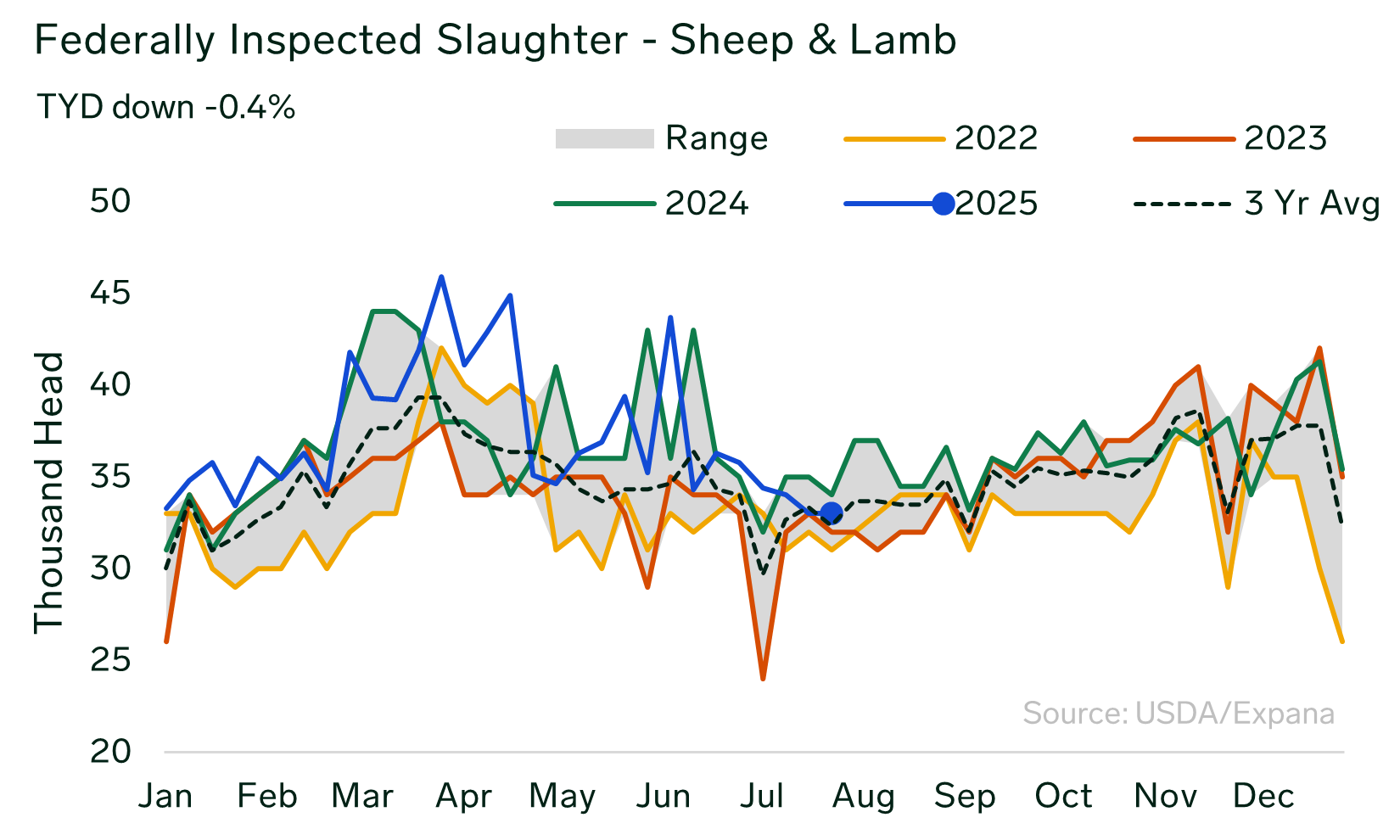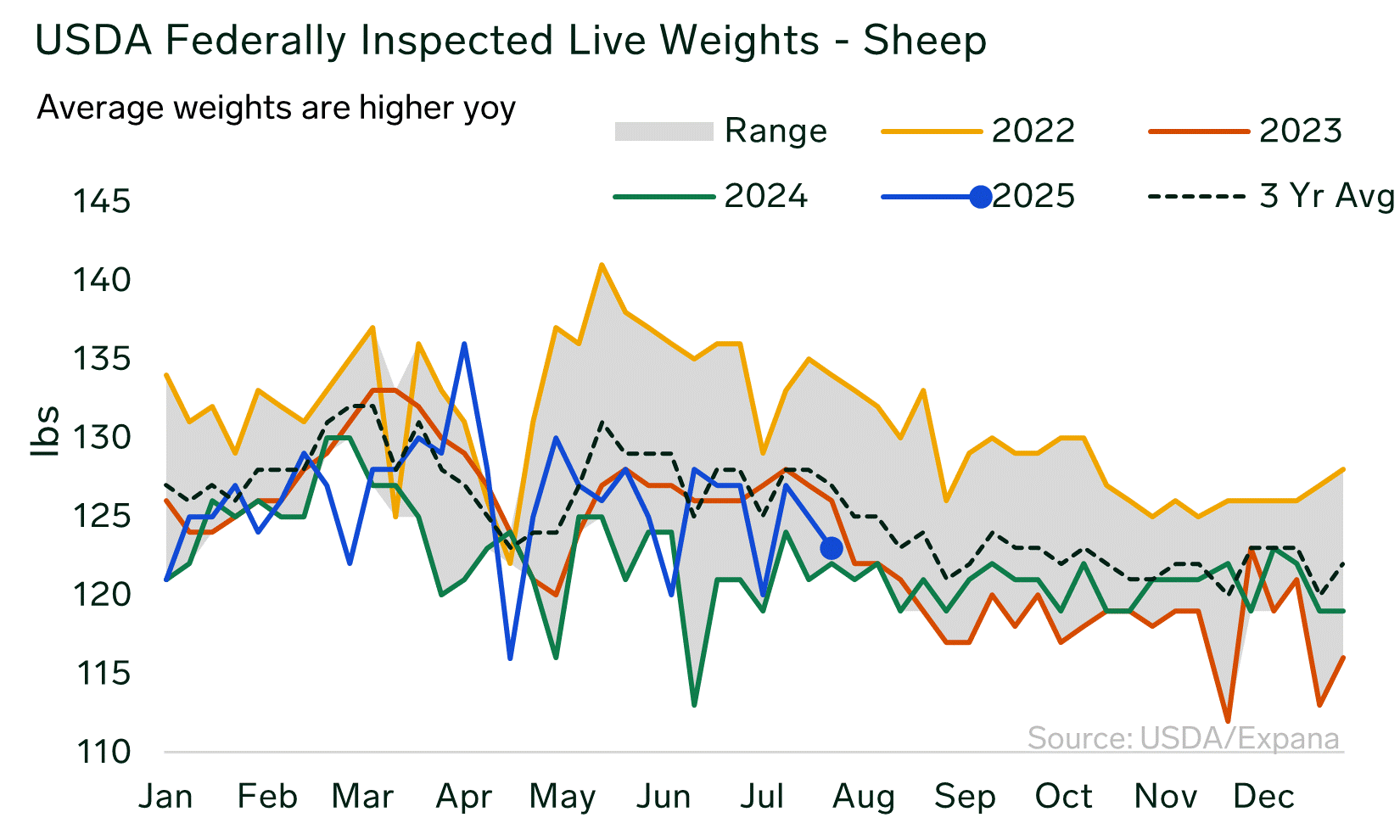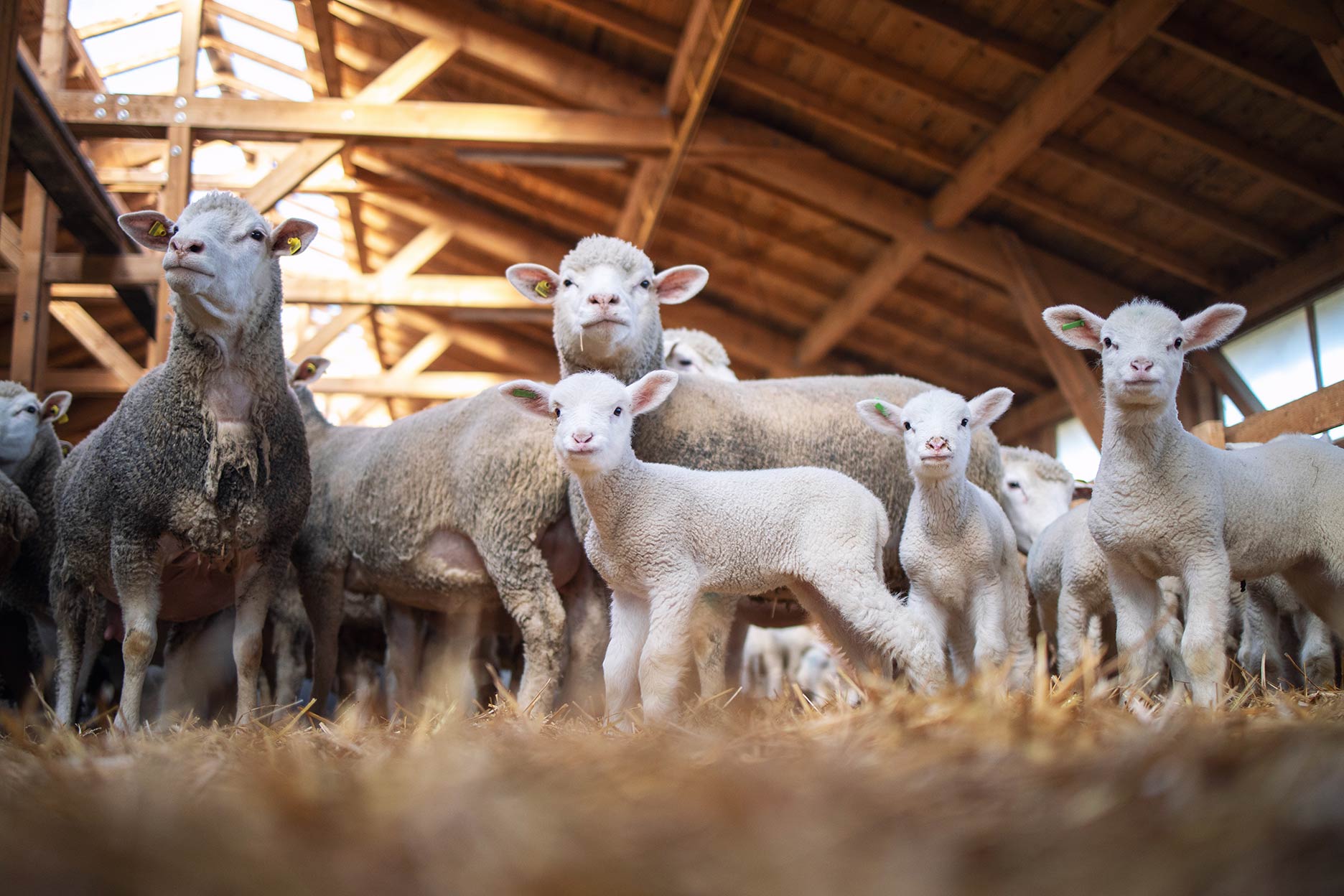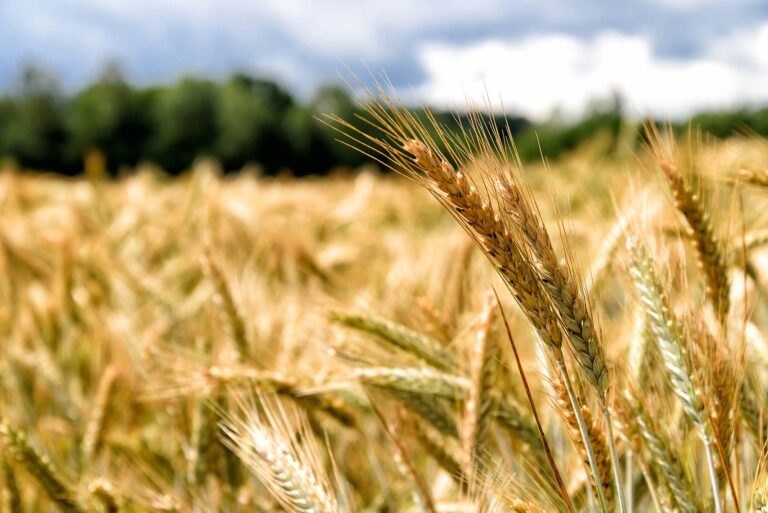
According to USDA’s weekly data, lamb and mutton production in the US reached 70.3 million pounds year-to-date as of July 25, 2025, which is 3.1% higher than the same point last year. So far this year, 1,099,000 total lambs and sheep have been slaughtered, slightly below the 1,103,000 head processed during the same period in 2024. Even with fewer animals being processed, heavier lamb weights have helped offset the decline. For the week of July 25, the average live weight was 123 pounds, up 1.7% from last year. The year-to-date average stands at 126 pounds, 3 pounds higher than at this same time in 2024.

While weekly slaughter numbers remain slightly lower, the broader trend reflects a gradual decline in US lamb slaughter over the past 25 years. USDA’s Economic Research Service notes that average lamb consumption in the US has dropped from about 5 pounds per person in the 1960s to around 1 pound today, as consumers increasingly prefer other proteins such as chicken, pork, and beef. To maintain adequate meat production despite fewer animals, producers have been feeding lambs longer. According to the American Lamb Board, this has helped keep overall production levels relatively steady, even as the national flock continues to shrink.
In short, USDA data shows that lamb production is slightly higher this year, even with fewer animals slaughtered, due to heavier weights. Demand for boxed lamb cuts is moderate, mainly tied to seasonal, cultural, and white tablecloth use. The market remains balanced through a combination of lower head counts, increased weights, and consistent weekly production. However, market participants recently noted rising prices for lighter lambs this week, while heavier Y4+95up carcass sizes are seeing discounts due to increased availability.
Image source: Adobe
Written by Mason Augustino




